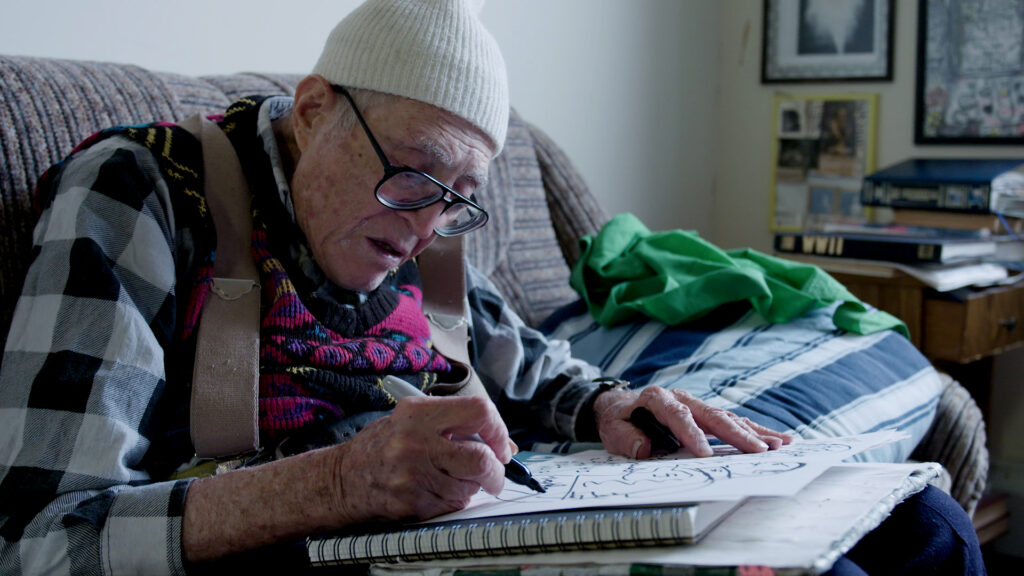Director: Elan Golod
Synopsis: At the end of World War II, Nathan Hilu, the son of Syrian Jewish immigrants to New York, received a life-changing assignment from the U.S. Army: to guard the top Nazi war criminals at the Nuremberg trials.
“I’m a memory man,”
With this sentence, Nathan Hilu, the son of Syrian Jewish immigrants, starts the documentary Nathan-ism. As director Elan Golod carefully shoots his hands and features, immersed in the work of art at hand, traces of a world start manifesting in front of our eyes.

This documentary connects the past with the present through the canvas of art. Fresh off WWII, young Hilu was a soldier on a mission from the U.S. Army: to guard the top Nazi war criminals at the Nuremberg trials. What follows is his unruly imagination turning factual events into works of art. Hilu’s paintings become a parallel visual memory of what happened during those formative years in his life and at a critical time in world history.
This documentary is an archive of a particular human being, at a special time in history. Documentarians are the modern-day historians. They keep a record of what happens in the world. But instead of news channels and social media working on mass reporting, documentarians take a slice of life and put it under the microscope. The Holocaust is a massive humanitarian tragedy, and taking it one slice at a time, one survivor at a time is the right thing to do, to collectively bring together the history of the world saved and protected for the generations to come.
If there is a lesson to learn, it’s how impactful art is in safekeeping the horrors and massacres taking place all over the world. Filmmakers and artists worldwide must pay attention to every person who has contributed to documenting wars and genocides. If we want something to stand the test of time, let’s write about it and photograph it, but also, let’s make art and seal it with emotions.

For 90-year-old Hilu, his ultimate victory over Hitler is making fun of him. His paintings are a mockery of bloodthirsty antisemites, brutal ethnic cleansers, and fascists. Art always stands on the right part of history when it does what it does best, belittling the evil and the greedy, and elevating the weak and the oppressed. Golod perfectly captures that through various shots of Hilu’s tools and paintings of Nazi war criminals during the Nuremberg trials. Hilu’s imagination has created a strange, lucid world. His construction of the cells and the prisoners, while leaving space for some of his thought processes to survive the rapid progression of his old age.
Nathan-ism is a tool of resistance. It’s not simply a documentary, but an insight into the mind of a genius recluse. An artist so swallowed and consumed by his art that the outside world seems to vanish in his presence. The inside of Hilu’s mind is a cacophony of events, words, actions, and colors. Golod’s camera perfectly captures his surroundings but helps him retrieve his memories, evoking them and showing them alive and vibrant with the intensity of the past.
This film truly implies that history is the greatest teacher. If the past and the present could be set side by side, only then will people know how suffering looks and feels. When years have passed and the comparisons become eerily similar, the world beholds one tragedy unfolding after the other, leading to worse outcomes but also bringing them back to textbooks and hate speeches, uncovering the root and cause of all problems, prejudice, hostility, unprecedented hatred, violence, and evil in its raw form. The hatred that people carry in their hearts, the grueling intentions to obliterate one group off the face of the big, wide earth, as if life cannot contain all creatures big and small, this hatred that breeds hatred has no place in a modern world where seemingly constant connectivity has made it easier for people to empathize with similarities rather than fuel differences.





